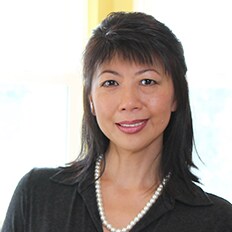Celebrating the Mid-autumn Festival
Few things are as mesmerizing as a full, luminous moon against the night sky. According to Chinese legend, the ethereal lady Chang’e (pronounced “chung-er”) dwells on the moon. And when the Chinese community celebrates the Mid-autumn Festival, fresh fruit, nuts and mooncakes – Chang’e’s favorite foods – will be enjoyed by many around the world.
Rivaling the Chinese New Year celebration, the Mid-autumn Festival is the second largest celebration in the Chinese community. Also known as the Mooncake or Moon Festival, the Mid-autumn Festival draws family members from near and far to reunite for dinner, and then to step outside to moon-gaze while enjoying a multitude of sweet bites. The holiday is held on the 15th day of the 8th month of the lunar calendar, which usually falls in September or early October. This is when the moon will most likely be at its fullest.
Of the many delectable bites served on this night, mooncakes are unquestionably the stars. Mooncakes are baked pastries, typically with sweet fillings such as white lotus seed paste, red bean paste or even assorted nuts and candied melon. However, even though the word “cake” appears in the name, mooncakes are neither airy nor light. A thin and tender pastry acts as a skin to wrap around the generous filling, which makes up the bulk of these beloved treats.
Just as importantly, the molds used to shape mooncakes also imprint auspicious Chinese writing and intricate designs onto the top faces of the cakes. Mooncakes can be round or square, ranging from 2”-3” across and about 1” thick.
Today, mooncakes have evolved beyond the traditional construct of baked pastry skin wrapped around a sweet bean paste center. Modern takes even include snow skin mooncakes, which are no-bake mooncakes made with precooked rice flour skin (similar to Japanese mochi). The filling has also expanded to include more global flavors, such as custard, sweet coconut and even strawberry cream cheese.
Perhaps the most prized mooncakes are the yolk-studded varieties. These mooncakes are filled with a sweet paste filling, with a salted duck yolk in the center. The pairing of salty yolk and sweet paste may seem unusual, but the salty and sweet components balance each other nicely. The rich golden duck yolk resembles the round moon, which symbolizes the wholeness, unity and harmony of family.
No matter your tradition, the Mid-autumn Festival is a great occasion to spend time with loved ones. So go ahead, gather your family and friends on this magical evening, and enjoy many delicious mooncakes together while soaking in the beauty of the full moon.
The Legend of Chang’e
There are many legends surrounding the worshipping of the moon, just as there are many versions of the legend of Chang’e. One of them goes like this:
A long time ago, there were 10 suns in the sky. The many suns scorched all manner of vegetation on Earth, and people were dying. Hou Yi, a virtuous man and expert archer, shot down 9 of the 10 suns, thus saving Earth.
As a reward, the goddess known as the Queen Mother of the West gave Hou Yi an elixir of mortality, but it was only enough for one. Unwilling to outlive his beloved wife, Chang’e, Hou Yi turned the elixir over to her for safekeeping.
When one of Hou Yi’s wayward students tried to seize the elixir from Chang’e, she swallowed the elixir to prevent it from falling into the wrong hands. Chang’e became immortal, and drifted up to the sky, finally stopping at the moon.
Heartbroken, Hou Yi set out a table under the sky, and made offerings of mooncakes and fruit, his wife’s favorite food. In spite of Hou Yi’s hope of his wife returning to him, the two were forever parted. To this day, the lady in the moon pines for her beloved husband.
Explore more recipes and shop our Mid-autumn Festival page.
Food is a universal connector; it frees us to share the most amazing stories. – Grace Yek.


